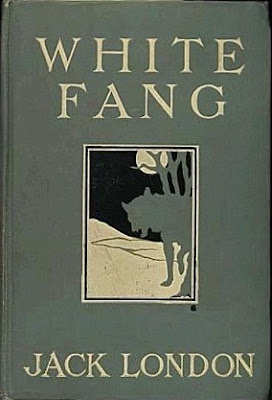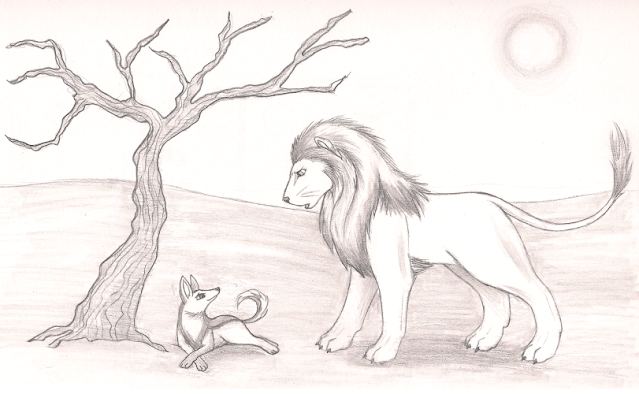Differences between Disney's version of White Fang and the book that inspired it
Jack London’s White Fang, a novel about a wild wolfdog who becomes domesticated and mistreated without affection by each master until his last (who teaches him the meaning of love) examines the violent world of animals and how they view the world of man. The book also teaches us about the meaning of morality and redemption as well as how to love our own dogs.
The novel has been adapted into a movie numerous times including ones by Anime and Disney in 1982 and 1991 respectively. While the former film is faithful to London’s work (although varying to some degree), the latter film while trying to follow London’s work has taken some liberties in making it so for the most part while following the film’s storyline has differentiated in most part from London’s book. This follows how the Disney film (unlike the almost completely accurate Anime film) is different from the book written by London
- The story is told more from the point of view of Jack Conroy who has nothing to do with the book and is created in placement of Weedon Scott, White Fang’s final master who teaches him the meaning of love
- Beauty Smith does not appear until later on in the novel where he steals White Fang from his first master Grey Beaver. In the film, Smith appears at the start where he steals Jack’s money with his two accomplices, Luke and Tinker although this does not dissuade Jack from his quest
- Alex Larson, his wife Belinda and Skunker are also not part of the novel although once they are acquainted with Jack, they take it upon themselves to burry their dead comrade, Dutch much as Henry and Bill are charged with taking a coffin containing the body of Lord Alfred to a higher area of the Yukon Territory in the novel. Much like the novel they and their sled dogs are attacked by a pack of wolves which Kiche, White Fang’s mother comes from. Like the novel, in the film, the wolves lure the dogs into the wild to kill them and later on before the last member of the party is killed, he is rescued by another team although in the novel only Henry is rescued while in the film both Jack and Alex are rescued
- Kiche is not named in the film although that is assumed to be her name. Rather than survive and go on to mate with One-Eye who is not a part of the film, she is shown to be wounded in the struggle to kill her human targets and limps back to her cave where she dies in the company of her one cub who goes on to be known as White Fang. There is also no mention or appearance of White Fang’s siblings who all die from hunger except him in the novel
- In the novel White Fang and his mother happen upon the Native Americans out of whom Grey Beaver recognizes Kiche as his late brother’s wolfdog and after christening White Fang, decides to make the cub his dog. In the film, White Fang stumbles into a trap made by Grey Beaver who releases and adopts him as his own dog. Also, Grey Beaver uses the term ‘Mia Tuck’ which means White Fang for his dog and this is not so in the novel and there is also no mention of Grey Beaver's late brother. Regarding the novel Kiche never returns to the wild despite her pup wanting her to and is later given away to another camp. White Fang later encounters his mother during a famine, realizing that she returned to the wild only for her to chase him off to protect her new pups
- Lip-Lip, the dog who brutally bullies White Fang throughout his puppyhood in the Native American village by encouraging other dogs to attack White Fang is not a part of the film although the village dogs do show some animosity towards the wolfdog by barking at him
- The lynx who was responsible for the death of White Fang’s father One Eye and whose kittens as well as herself would later be killed by Kiche makes no appearance in the film. It is implied that the scene where White Fang saves Jack from a bear was meant to replace this scene
- Unlike the film, White Fang’s first encounter with Beauty Smith is not first followed by Smith releasing one of his dogs against the wolfdog in the novel. The dog first released against White Fang in the film was (probably) named Buck as an ironic reference to the titular dog character of Jack London’s Call of the Wild about a domesticated dog becoming wild which White Fang is a companion and (reversed) thematic mirror to
- In the novel, White Fang fights both dogs and wolves (as well as a lynx) during his capture by Beauty Smith who takes him to various areas of the Yukon for display and to showcase his fights while making him known as ‘The Fighting Wolf’. In the film, the dogs that White Fang fights are mainly provided by Smith’s rival Sykes who has nothing to do with the novel
- Cherokee, the Bulldog who almost kills White Fang in the novel is a Pitbull in the film although (while not implied) he may be half Bulldog as well. Most of the fights take place out in the open snow in the novel but in the film, they are always indoors
- Tim Keenan, Cherokee’s owner in the novel is replaced by Sykes in the film although Sykes like Keenan still shows concern for his dog while Jack (in the place of Weedon Scott) separates White Fang from Cherokee’s jaws. Another character from the novel not to make an appearance in the film is Matt, Scott’s musher who assists him in releasing White Fang from the pressure of Cherokee’s jaws
- In the novel Beauty Smith tries to steal White Fang back on his own while in the film, he is alerted by one of his accomplices and a fight breaks out between White Fang’s new masters and Beauty Smith and his party though in both cases Smith is defeated and turned over to the authorities
- In the novel, White Fang finds a new home with Weedon Scott’s family (going as far as to save the life of Scott’s father from a criminal who is absent in the film like Scott’s family) while in the film he continues to live in the Yukon. Jack considers going home at one point though he knows he cannot take White Fang with him so he choses to remain behind and make his home in the Yukon with the wolfdog. Another character written out of the movie is the sheepdog Collie whom White Fang has six pups with although this is referenced in the film's sequel 'Myth of the White Wolf' although the wolfdog mates with a proper wolf and they have a litter of pups




Comments
Post a Comment